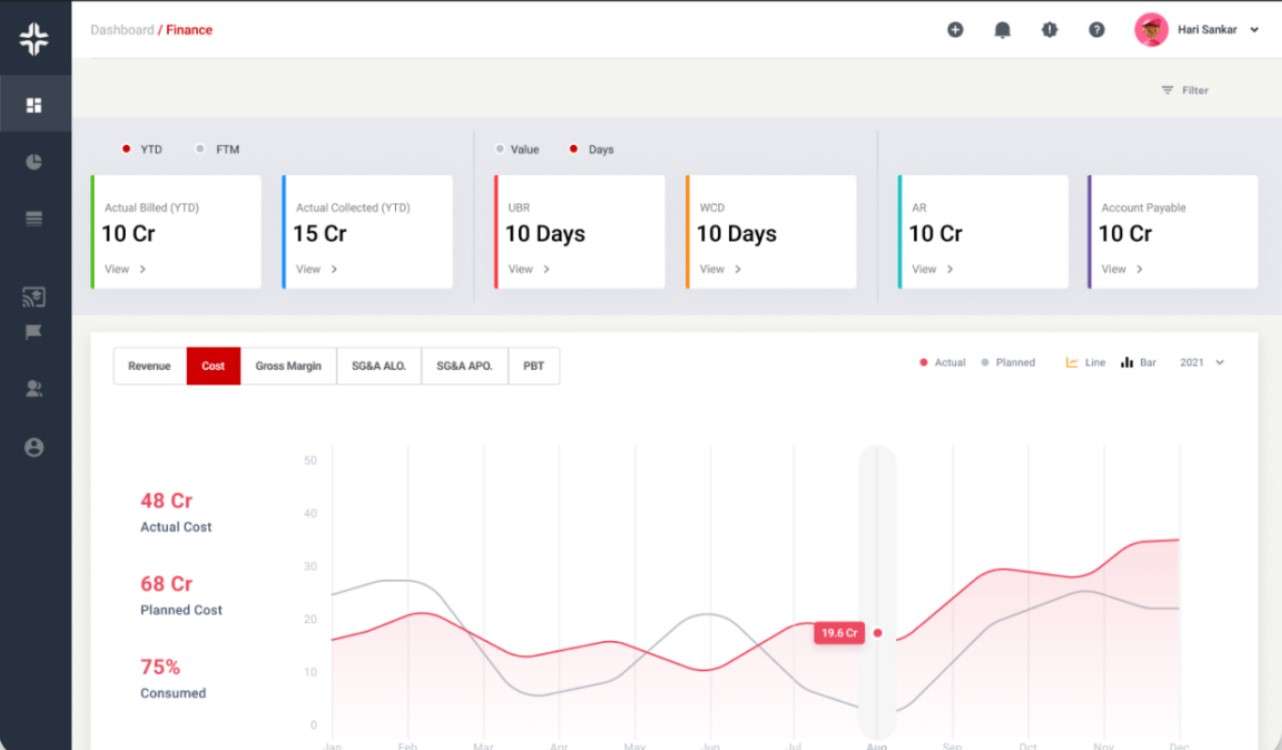Home » PSApedia
Project Budget Variance
Navigate Project Challenges with Precision. Monitor Project Budget Variance for Informed Decision-Making.

What is Project Budget Variance?
Project Budget Variance (PBV) is a financial metric used to measure the difference between the projected budget of a project and the actual amount spent.
It helps project managers and financial analysts determine if a project is on track financially or if adjustments need to be made to ensure profitability. A positive variance indicates that the project is under budget, while a negative variance suggests it’s over budget.
Importance of Project Budget Variance
Understanding PBV is crucial for several reasons:
1. Financial Control: It provides an immediate snapshot of the project’s financial health.
2. Decision Making: Based on PBV, managers can make informed decisions about resource allocation.
3. Risk Management: Identifying a negative PBV early can help in mitigating potential financial risks.
4. Performance Analysis: It aids in evaluating the efficiency of project management and financial planning.

Importance of Project Budget Variance
Calculating Project Budget Variance
Formula:
Project Budget Variance (PBV) = Budgeted Cost − Actual Cost
Example:
Let’s say a project had a budgeted cost of $100,000. By the project’s midpoint, the actual cost incurred is $60,000, but the projected cost at this point was supposed to be $50,000.
{PBV} = $50,000 – $60,000 = -$10,000
This indicates a negative variance of $10,000, meaning the project is over budget by this amount.
Project Budget Variance vs Other Financial Metrics
While PBV focuses on the difference between projected and actual costs, other metrics like Earned Value (EV) and Actual Cost (AC) provide different insights:
- Earned Value (EV): Represents the value of work actually performed.
- Actual Cost (AC): The real costs incurred for the work performed.
- Cost Performance Index (CPI): A measure of cost efficiency. It’s calculated as CPI=EV/AC
Comparing PBV with these metrics provides a holistic view of a project’s financial performance.
| Metric | Description | Significance in PSA |
|---|---|---|
| Project Budget Variance | Measures the difference between planned and actual project expenses. A positive variance indicates cost savings, while a negative variance implies cost overruns. | Critical for monitoring project profitability and ensuring financial control. |
| Revenue Forecast Accuracy | Evaluates how closely actual revenue matches the projected revenue. A high accuracy suggests effective sales forecasting. | Helps in aligning revenue expectations with actual performance, guiding business decisions. |
| Gross Margin Percentage | Calculates the percentage of revenue retained after deducting the cost of goods or services sold. | Important for assessing overall profitability and making pricing decisions. |
| Resource Utilization Rate | Measures the percentage of billable hours compared to total available hours for employees or resources. | Affects the efficiency of resource allocation and utilization, impacting profitability. |
How Project Budget Variance is Used?
PBV is utilized in various ways:
1. Forecasting: Helps in predicting future costs based on current trends.
2. Resource Allocation: If a project is over budget, resources might be reallocated to ensure its completion.
3. Stakeholder Communication: Provides stakeholders with a clear picture of the project’s financial status.
4. Performance Reviews: A consistent negative PBV might indicate inefficiencies in the project management process.
Ready to Optimize Your Project Budget Variance?
KEBS, a leading Professional Service Automation (PSA) software, offers tools that can significantly aid in optimizing PBV. With KEBS, you can monitor your project’s financials in real-time, ensuring that you’re always aware of any variances.
KEBS resource management software ensures that resources are allocated efficiently, reducing the chances of going over budget. Dive deep into your project’s financials with KEBS financial analytics, helping you understand the reasons behind any variances. Tools like Gantt charts help in effective project planning, reducing the chances of budget overruns.

KEBS Finance Management
Ready to optimize your Project Budget Variance? Contact KEBS today or request a demo to see how KEBS can transform your project financial management.



